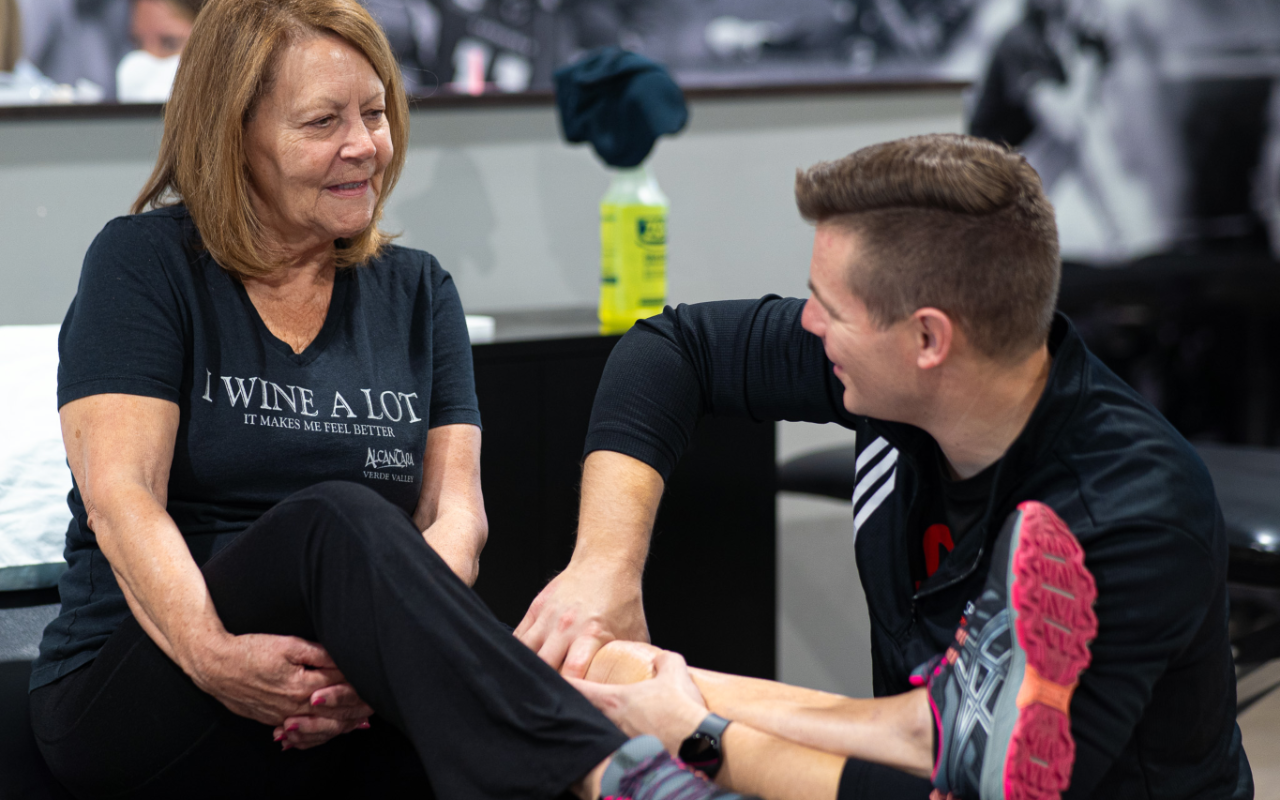By: Peter Gorman, PT, DPT, CSCS
You can treat several different types of arthritis through physical therapy. Osteoarthritis (OA), Rheumatoid Arthritis, Psoriatic Arthritis, Fibromyalgia, and Gout are all different types of arthritis that affect the body differently and result in different types of pain. Physical therapists are movement specialists who can treat a range of different conditions. The most common type of arthritis to be referred to in physical therapy is OA.
Let’s break down the word “osteoarthritis.” “Arthro” means joint. “Itis” is inflammation. “Osteo” refers to the skeletal system. Essentially, OA is the inflammation of a joint.
Your joints contain cartilage and synovial fluid that lubricates the joint and allows all the surfaces to be smooth and move smoothly together. Over time, the cartilage breaks down and the fluid decreases because we live in a gravity-filled world- which inevitably puts stress on our joints. This results in a rough surface that makes it much more difficult for our joints to move well.
When our joints don’t move well, pain occurs.
Symptoms
Joint pain and joint stiffness are the two biggest symptoms. If you are experiencing OA, you will most likely have these symptoms after being sedentary and then getting up to move for the first time. Those first several steps or first few minutes of moving might be the most painful until the body naturally lubricates your joints again by recirculating synovial fluid into your joints.
You may experience achiness after activity as well.
Mitigating Arthritis
One of the main ways to mitigate the severity of OA is to decrease the amount of force felt through your joints. This can be done in many ways.
1. Modify your activity
Changing your high-impact activities to lower-impact activities can help minimize the force felt through your joints. For example, running is an extremely high impact activity that brings 2-3x your body weight through one of your legs with every stride. If you are truly looking to modify your activity to be lower impact, you may swap running with swimming or biking.
2. Strength Training
If you do not want to swap out your favorite high-impact activity, then strengthening your muscles is a great way to decrease the amount of force felt through your joints. By fortifying your muscles, they can work to protect your skeletal system and take on a great deal of force.
3. Stretching
Stretching and strength training do go together. Together, they reduce the stress on your joints and improve your movement mechanics. Reducing the tension of the muscles that cross a joint can help reduce the stress to the joint.
We live in a gravity-filled world, so stress on the joints is inevitable, and a certain amount of tissue breakdown is also inevitable. However, that does not mean that you don’t have to work to move and feel your best- even if you are diagnosed with OA. Modifying your activity or adding in a strengthening and stretching routine may help slow it down so it does not continue to progress in your body.
PT for Osteoarthritis
Everyone has different body types. Everyone has different stresses and demands on their bodies. Everyone has different goals. A physical therapist appreciates how unique you are and can come up with a plan that is individualized for you. We can work to find a way to offload your joints and find a different way to move, so you can accomplish your specific goals.
Are you dealing with arthritis-related pain and stiffness? Physical therapy can be your key to relief and improved mobility. Schedule an appointment today!

